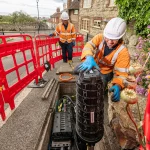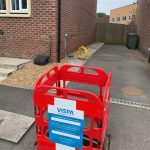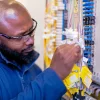ISP BT Trials New Way of Checking User Broadband Line Speeds UPDATE
Consumer UK ISP BT has begun to trial a new way of checking customer broadband speeds, which sounds like it will require special code (firmware) to be added on to the end-users router (Smart Hub etc.) in order to test and monitor their line. This could help them to comply with Ofcom’s forthcoming changes.
Last year the telecoms regulator, Ofcom, announced a new Voluntary Code of Practice for Broadband Speeds (CoP), which among other things would provide UK consumers with more information about their estimated line performance and make it easier to exit your contract if related problems cannot be resolved within 30 days.
Crucially this CoP, which is due to be introduced from 1st March 2019, added a requirement for ISPs to deliver normally available speed estimates based on peak time speeds. Effectively this meant that member ISPs might have to test the actual speeds of a statistically meaningful panel of customers on each broadband package during peak time, which at the time was neither cheap nor easy to do.
Advertisement
Ordinary web-based speedtests are simply not up to the task because they are too unreliable and easily influenced by issues such as local network congestion, limitations of end-user devices and slow WiFi etc. The alternative of using lots of custom routers from SamKnows (Ofcom and Virgin Media use this for their speed reports) has also been rejected by other ISPs as being too expensive or tedious to implement.
Alternatively ISPs have also been exploring different methods, such as the possibility of extracting more performance data from wholesale suppliers (there are some big limitations to what can be done here) or building special connection monitoring code into the end-user’s router (e.g. ASSIA’s TruSpeed). The latter would be difficult to develop if starting from scratch.
The idea of using custom router code has gained some favour among a few ISPs and BT (possibly including siblings EE and Plusnet) now look like they may be pursuing this method. The ISP has just begun inviting selected customers to help “trial a new way of checking customer line speeds,” which they say will run “tests on your … line to make sure our systems can pick up the new speed checks. This may slow down your line temporarily but it won’t last longer than 24 hours.”
The explanation loosely appears to point toward a system that could rely on some feedback from the end-user’s router, although at this time BT has not explained the specifics or whether they are making use of ASSIA’s new system (we have asked and will report back if they reply). Likewise it’s unclear whether such checks will only be performed once or at regular intervals.
Advertisement
BT will also have to be careful to ensure that any checks do not have a noticeable impact on service speed and latency when the line is most active, which could easily disrupt end-user latency (we suspect they’d try to conduct such tests when the line is idle).
Apparently end-users can also expect to receive an email and text message after the test, which will “indicate the speed changes.” The communication should help to comply with Ofcom’s forthcoming regulation changes. We’ll update again when we learn more.
UPDATE 8th Jan 2019
Just for some context we’ve pasted some of the text from Ofcom’s related High-Level Testing Principles document, which sets out the requirements for how ISPs are supposed to conduct this sort of testing.
Advertisement
Test principles
Each panellist must have a unit capable of running the appropriate test software that can measure download and upload speeds received at the customer premises equipment (CPE). The ISP may run additional quality tests if they wish to do so, but for the purposes of the code measuring download and upload speeds will be sufficient.
The software must perform daily tests for each panellist during peak time (8-10pm for residential services, 12-2pm for business) and the quiet hour (the time at which the ISP expects the network traffic to be least contended). ISPs must ensure that tests are spread out across each of these periods.
To determine the maximum speed achieved on the panellist’s line, ISPs may test throughout the day rather than solely in the expected quiet hour.
The data used to calculate congestion must be updated at least quarterly, drawing on the previous three months’ speed measurements, although ISPs may update more frequently if they wish to do so.
The download and upload speed tests should not be run when user traffic is detected by the unit, as this could result in a negative impact on the performance experienced by the user, and may also compromise the test results.
To avoid detriment to panellists, the data used for the tests must not be included in the panellists’ data allowance (if any).
To assess the capacity of the user’s broadband connection, up to three concurrent transmission control protocol (TCP) connections must be used.
The download and upload tests will consist of downloading and uploading files over a duration of 5 seconds. The application layer protocol must be http 1.1 … The files to be used for the testing will be stored on an Ofcom webserver, from where the ISPs can retrieve them for use.
Meanwhile ISPs with smaller customer bases (generally fewer than 20,000 per product) or narrow geographic coverage are told to discuss suitable alternative approaches with Ofcom, which may include sampling by technology, rather than by product. Very few small ISPs are likely to sign-up to the 2018 code as it would be difficult (technically, practically and economically) for most of them to meet the new requirements.
Mark is a professional technology writer, IT consultant and computer engineer from Dorset (England), he also founded ISPreview in 1999 and enjoys analysing the latest telecoms and broadband developments. Find me on X (Twitter), Mastodon, Facebook, BlueSky, Threads.net and Linkedin.
« The 2019 Best UK Home Broadband ISP Choices by ISPreview

















































Comments are closed